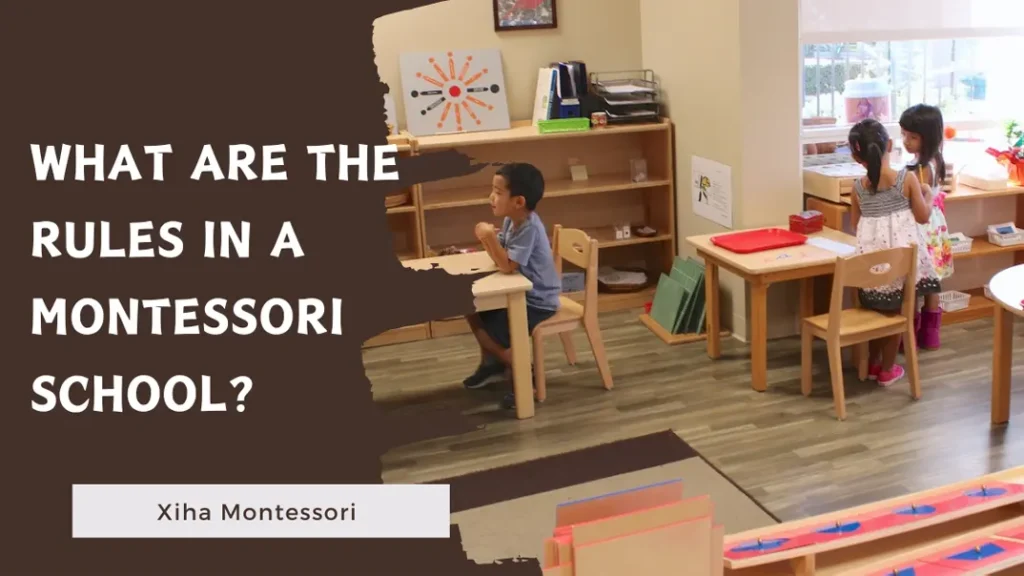If most of us remember our time in school, we can remember the rules we had to follow. LOTS of rules: Walk, don’t run. Raise your hand to speak. Take turns. Stay in for recess if you don’t finish your homework. No reading during a lesson. Go to detention if you draw on your desk. The list goes on and on. There are only a few important rules in a Montessori school and no harsh discipline. However, walk into any Montessori classroom and immediately notice the calm, orderly environment full of focused, well-behaved children. How could this be?
The rules in a Montessori school are simple, actionable, and comprehensive. Montessori rules are designed to protect a child’s rights and to hold them accountable for their responsibilities. Respect for the child is at the core of all Montessori rules.
While these rules are simple, we can learn a lot from them. Let’s dig in!
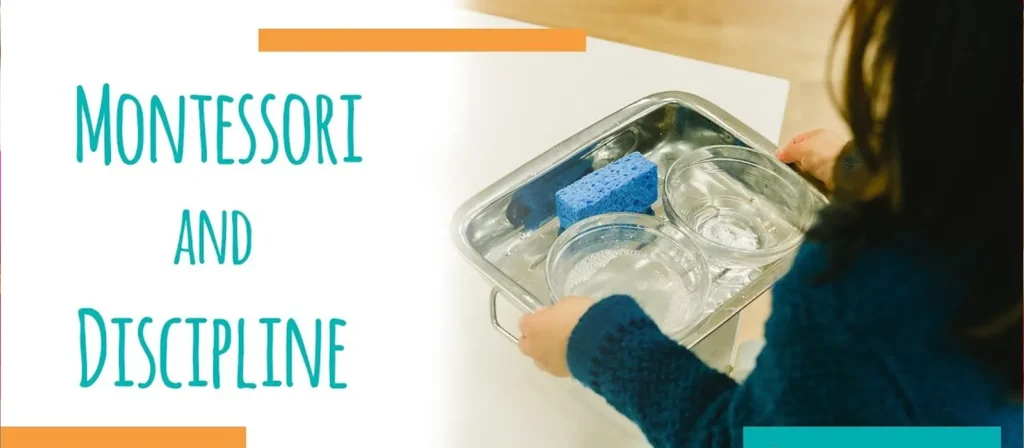
Discipline in Montessori Settings
Before discussing the rules in a Montessori school, it’s important to understand the Montessori philosophy on discipline.
Traditional methods would indicate that discipline is a system of rewards and punishments. Get an A on your test? Here’s a piece of candy. Leave a mess on your table? You have to sit by yourself at lunch.
This is not the case for Montessori discipline. Like all aspects of the Montessori philosophy, Montessori discipline is about child-centered learning. The Montessori method understands that children will make good choices when given the freedom to do so and that their natural inclination is to do well. No child enjoys messing up or getting in trouble!
So, instead of rewards and punishment, Montessori discipline is all about connection, boundaries, and natural consequences. Children need connection and trust with their teachers and caregivers. Teachers and caregivers set firm, appropriate boundaries to preserve the learning and living environments. And all actions come with natural consequences.
Let’s think back to the examples of traditional discipline we used earlier: In a Montessori classroom, a child who performs well on an assessment doesn’t get a piece of candy; they get the pride and confidence that comes from doing their best, as well as encouragement and praise from their teachers for working hard. A child who leaves a mess on their table doesn’t have to be isolated during lunch because those two things have nothing to do with each other. Instead, they will experience the natural consequence of having to clean up their table.
Rather than forcing children to behave through control, punishment, and bribery, Montessori discipline is designed to help children learn to behave safely, respectfully, and productively.
How is Discipline and Conflict Handled in a Montessori Environment?
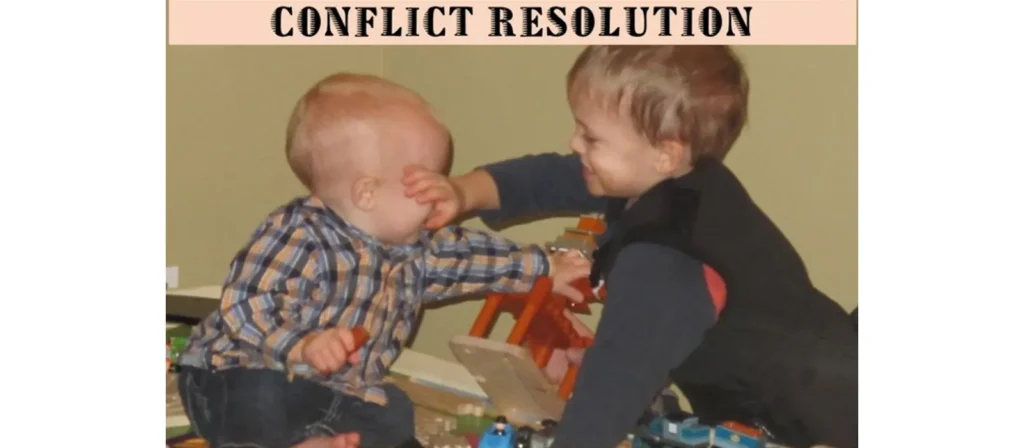
Discipline and conflict are inevitable parts of any learning environment, especially in preschool and kindergarten settings. Many parents and educators struggle with finding the right balance between discipline and freedom for children. How does the Montessori method approach these challenges effectively?
In a Montessori environment, discipline is viewed as self-discipline rather than imposed discipline. Conflict is seen as an opportunity for learning and growth, managed through guidance and mutual respect. Here’s an overview of the key approaches:
1. Prepared Environment
Montessori classrooms are carefully designed to promote order, calm, and accessibility. The environment helps children develop self-discipline by engaging with materials independently and respectfully.
2. Ground Rules and Consistency
Clear, simple ground rules are established and consistently enforced. These rules emphasize respect for oneself, others, and the environment. Consistency in applying these rules helps children understand boundaries and expectations.
3. Positive Reinforcement
Positive behavior is encouraged through praise and recognition. Children are often given specific feedback on their actions, helping them understand the value of their positive behaviors.
4. Role of the Teacher
The teacher, or guide, models appropriate behavior and acts as a facilitator rather than a disciplinarian. They observe the children and intervene only when necessary, guiding them to resolve conflicts and make better choices.
5. Conflict Resolution
When conflicts arise, children are encouraged to use their words to express their feelings and needs. Teachers may facilitate discussions, helping children understand each other’s perspectives and find mutually agreeable solutions. Techniques such as “peace tables” or “peace corners” provide a designated space for children to resolve disputes.
6. Natural Consequences
Children learn from natural consequences rather than punishments. For instance, if a child misuses a material, they might lose the privilege of using it for a time. This helps them understand the impact of their actions without feeling shamed or punished.
7. Emotional Development
Emotional intelligence is nurtured through activities that help children recognize and manage their emotions. Lessons on empathy, cooperation, and respect are integrated into daily activities, assisting children to develop the skills to handle conflicts constructively.
8. Independence and Responsibility
Children are given responsibilities appropriate to their age and capabilities, fostering a sense of ownership and accountability. This empowerment helps them develop self-discipline and a sense of responsibility towards their community.
9. Grace and Courtesy Lessons
These lessons teach children social norms and polite behaviors, such as saying “please” and “thank you,” taking turns and listening attentively. Regularly practicing these skills helps children navigate social interactions smoothly and reduces conflicts.
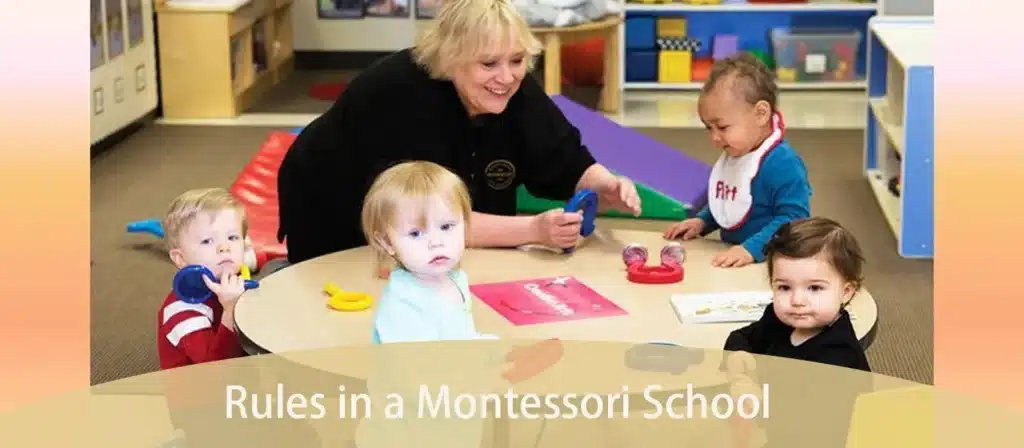
Ground Rules in a Montessori School
Every Montessori classroom is different and every Montessori teacher runs their classroom differently. The same goes for Montessori parents and caregivers! However, one thing remains consistent across all Montessori environments: The Ground Rules.
The Ground Rules are the backbone of Montessori discipline and are largely responsible for maintaining a calm, focused, and joyful environment. There are three main Ground Rules in any Montessori space:
- Respect for oneself.
- Respect for others.
- Respect for the environment.
That’s it! Those are the rules. They may seem simple, but these three rules cover just about any scenario you can think of. Does a student push another student? That violates “Respect for others.” A child throws their toys around the room and doesn’t pick them up? That violates “Respect for the environment.” Does a student refuse to participate in learning? That violates “Respect for oneself.” All three of these rules are easy for children to understand and talk about, allowing children to be part of the conversation about classroom or home rules instead of simply being subject to these rules.
The Ground Rules are also highly aligned with all five of the core principles of Montessori. They respect the child by making rules that are not designed to control the child but are intended to guide the child. They are created according to the principle of The Absorbent Mind, with an understanding that children can learn and understand these rules because they are intelligent, thinking beings.
They are designed to work well with Sensitive Periods, as they are broad enough to be accessed at different levels by children of different ages and developmental stages. “Respect for the environment” helps children actively participate in the Prepared Environment that their teachers and caregivers work so hard to create. And, perhaps most importantly, these rules are based on the principle of Auto Education. Children learn best when they teach themselves.
The Ground Rules are general on purpose. For children to truly internalize how to behave safely and respectfully, they need to explore the boundaries of these rules themselves. The rules cannot simply be drilled into them by a teacher or parent.
Rights and Responsibilities
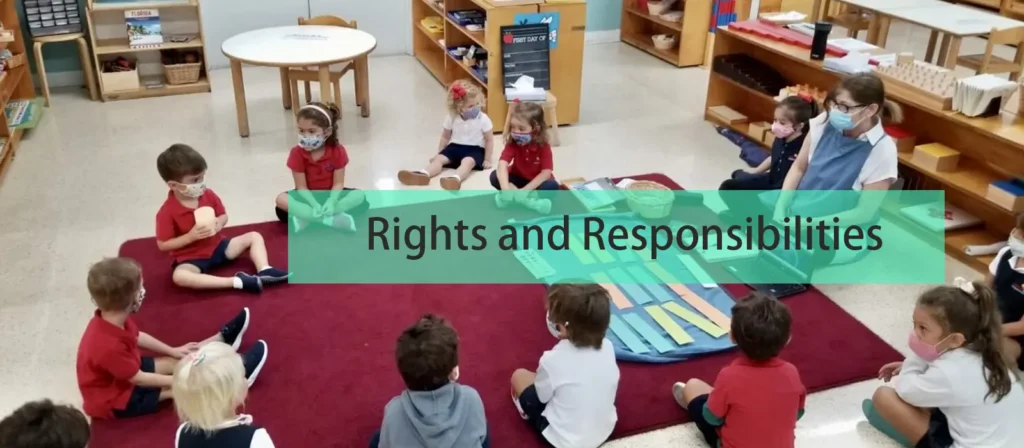
This is not to say that teachers and parents have no role in teaching these rules. One great and highly Montessori-aligned method is to discuss these rules regarding Rights and Responsibilities with the children.
All citizens have rights and responsibilities, so this is a good, real-world-centered approach to explaining rules and discipline to children. This approach helps children understand that they participate in a society in which certain things will be expected of them and in which they can expect certain things from others. It’s also a useful way to teach children how to positively relate to others!
Writing down or discussing a list of rights and responsibilities in classrooms and at home can be helpful. This helps children deconstruct the Ground Rules into more accessible examples. Rights and Responsibilities lists work best when created with the child rather than for the child. Children are more likely to internalize concepts when they are active participants in developing them!
For teachers, this might look like a classroom discussion while brainstorming on a piece of poster paper. This might be as simple as a one-to-one conversation for parents and caregivers. Both teachers can solicit ideas from children by asking questions like:
- How do you want to feel in school/at home?
- What makes you feel respected?
- How can you show respect for others?
- How can you show respect for the classroom/house/playroom?
Here’s an example of what some Rights and Responsibilities list items might look like:
- I have the right to feel physically and emotionally safe in school. I am responsible for being safe with my words and actions so others can feel safe.
- I have the right to use any classroom materials I’m familiar with and know how to use correctly. I am responsible for waiting my turn to use these materials if someone else is using them first, treating them with respect, using them safely, and putting them back where they belong when I’m done with them.
- I have the right to move around the space freely. I am responsible for moving calmly and safely to avoid disturbing others.
- I have the right to work and play how I choose, whether alone, with a friend, or in a group. I have the responsibility to respect the choices of others.
It’s important to note that Rights and Responsibilities are not just for students, teachers, and caregivers! Modeling is at the core of all Montessori teaching, and this is no exception. If we want children to learn to behave, we must teach by example. Think about how confusing it is for children to be told they must be quiet right before witnessing their teacher yelling at another student! Or being told they must always clean up their mess, while their parents never do!
Both the Ground Rules and Rights and Responsibilities should be able to apply to both children and adults to create an equitable, consistent, and understandable environment.
The table below illustrates how children’s rights and responsibilities are nurtured, developed and supported in our Montessori environment:
| Right: | Children are free to use any materials displayed in the classroom environment. |
| Responsibility: | Children must use materials respectfully. They must not harm the materials, themselves or others. Materials must not be used in a way that interferes with the activities of others in the setting. |
| Right: | Children may work on tables or mats, whichever is appropriate for the work chosen. |
| Responsibility: | Children are not allowed to work on shelves or racks as this interferes with the learning of other students in the classroom. |
| Right: | Children are free to use the room as they see fit within the constraints of the rules. |
| Responsibility: | Children will restore the environment during and after school. Children are responsible for cleaning up spills, rolling up mats, pushing back chairs, and returning homework to its proper place on the shelf. |
| Right: | Children may not touch the work of others without permission. Children must not interfere with others’ learning cycle. If a child must leave the work temporarily, he or she may continue later, confident that the work will remain intact. |
| Responsibility: | Children may not touch the work of others without permission. Children must not interfere with the learning cycle of others. If a child must leave the work temporarily, he or she may continue later, confident that the work will remain intact. |
| Right: | Children have the right not to participate in group activities. They may continue with their lessons during the group activity or stand by as observers of the group activity. |
| Responsibility: | Children may not interfere with or disrupt activities they choose not to participate in. This teaches team responsibility. |
| Right: | Children have the right to work individually. |
| Responsibility: | Children are not forced or encouraged to share their work. With appropriate materials and reasonable, respectful ground rules, sharing becomes part of the natural process. Generosity develops from within as children mature in confidence and security. |
| Right: | Children have the right to do nothing. In the process of “doing nothing,” children always learn by observing, thinking, and resting. |
| Responsibility: | Children have the right to do nothing. In “doing nothing,” children always learn by observing, thinking, and resting. |
Why Montessori Rules Work
So, how does this work? Why are children more responsive to a few simple rules enforced through connection and natural consequences than many strict rules enforced through punishments and rewards?
The answer is simple: It’s all about learning. Children are not born with a complete understanding of their world; they must learn it. Arbitrary rules, strict rules, punishments, and rewards…all of these strategies can control how a child behaves and can train a child to do certain things, but the child isn’t learning anything. Instead, they are simply performing rote behaviors that they don’t understand.
Conversely, the Montessori approach gives meaning to rules and discipline and invites children to understand why they exist. Montessori students and children raised in Montessori households will push boundaries and test limits, like all children. Still, the Ground Rules and the response to this testing and pushing will help them understand these limits and boundaries and make their own choices about how they want to behave in the future.
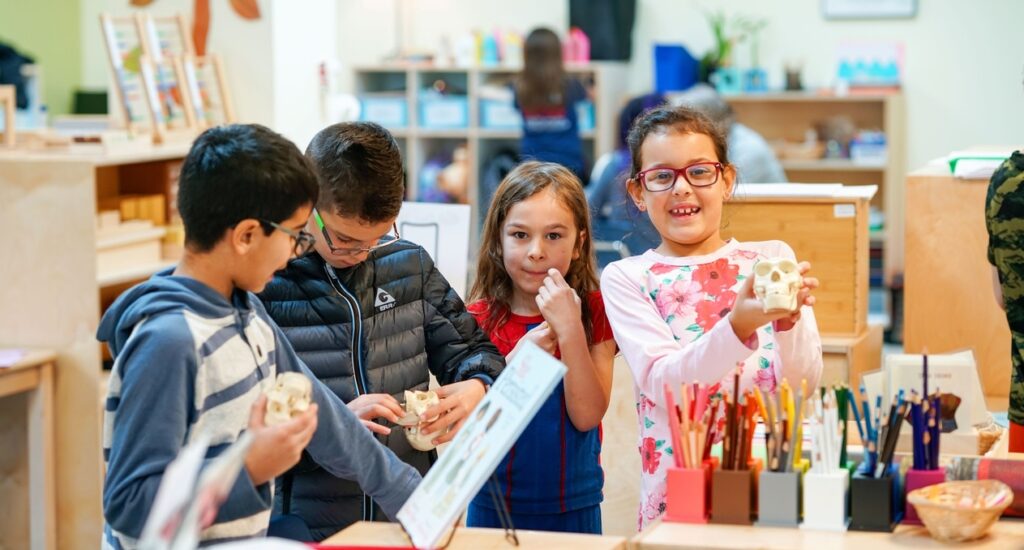
What Are the Rules for Parental Involvement at Montessori Schools?
Parents often wonder how to be more involved in their child’s education. Montessori schools have specific guidelines to ensure a balanced and effective involvement that benefits both the child and the school community.
In Montessori schools, parent involvement is highly valued and considered an integral part of the educational process. However, the specifics can vary from one school to another. Generally, Montessori schools establish guidelines and rules to ensure that parental involvement supports the philosophy and goals of the Montessori method. Here are some standard rules and practices for parental involvement:
- Respect the Montessori Philosophy: Understand and support the Montessori principles of independence and self-directed learning.
- Observation Guidelines: Schedule observations in advance and avoid disrupting the classroom during visits.
- Communication Protocols: Follow set communication methods like parent-teacher conferences and newsletters for effective information exchange.
- Volunteer Opportunities: Participate in structured volunteer activities that support the school without disrupting learning.
- Participation in School Events: Engage in events such as open houses and workshops to support the school community.
- Home-School Consistency: Create a Montessori-friendly environment at home to support your child’s independence and learning.
- Parent Education Programs: Attend workshops and read materials the school provides to understand Montessori practices better.
- Support Child’s Independence: Encourage your child’s independence through age-appropriate responsibilities and choices.
- Consistent Attendance and Punctuality: Ensure regular attendance and punctuality to maximize your child’s learning experience.
- Health and Safety Policies: Follow the school’s health and safety guidelines, including illness policies and immunization requirements.
These concise rules help ensure that parental involvement is beneficial and aligns with the Montessori educational approach.
This is the difference between the Montessori method and traditional discipline: While other children might behave because they’re afraid of what will happen if they don’t, Montessori children behave because they know it’s the right thing to do.

